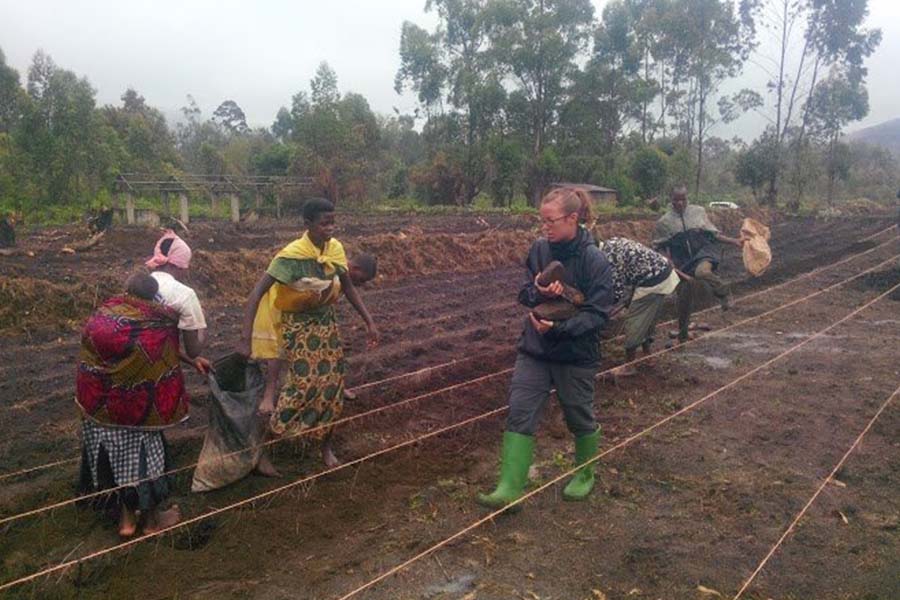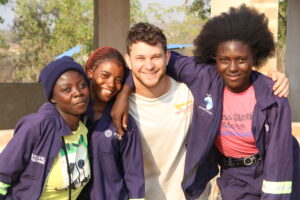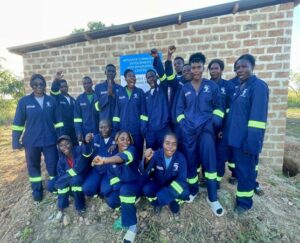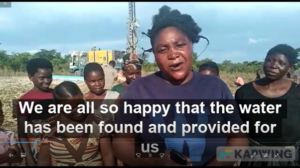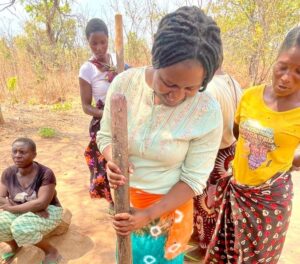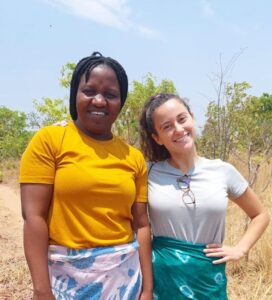Burundi is home to many exciting cultural phenomenon, especially for the new traveller or tourist. But as we have been here for a few months now, we are starting to learn our way around the country and get to know its culture and people from a much closer perspective.
Some of the experiences we have had here are similar to those that we have at home. But some are so vastly different and wonderful that I felt I had to share them. As each experience is tied to a specific location, I have created this interactive map for you to peruse. So here are some of the hotspots that we as Tevel Fellows get to know quite well in Burundi.
Rabiro Market:
The Rabiro Market. Market day is on Mondays and Thursdays. The first time I saw it, I think was disappointed. It was early Monday morning, our first week in the village. It looked abandoned, decrepit. There is something skeletal about the bare market stalls, their irregular planks and uprights grey and weather-worn and almost organic. The shops were still closed, the bare earth wet and pale, not the rich red of the farm soil. We came back through the market in the afternoon – and it was wonderful. Every corner of the square was filled with people. The stalls had filled up, selling clothes, equipment, farm supplies. All around them, women had laid out produce, vegetables, roots, bread. It was colorful and bustling, and I felt guilty for being so uncharitable to it that morning. The Rabiro market is still my favorite place here. On market days, from late morning and until after dark, it’s filled with food. Women sell tomatoes, potatoes, cassava, bananas, plantains, avocado and more. It’s nearly sorted – all the tomatoes are in one row, all the onion in another. Bright red palm oil comes from the plains. Trays of fluffy, yeasty bread rolls emerge from the bakeries. Soaps, candles, kitchen tools from the city. Tiny fish from the lake in glittering, smelly piles, and larger fish that have been tied and smoked so they’ve curled into a neat geometric circle. In season, you can buy handfuls of fried and salted termites. They’re good for you, high in protein and calcium – and they taste like chips.
Rabiro House:
I live in what we call the Rabiro house. It’s a nice house. No, really. It is a solid, brick structure with a tin roof. When it rains, it’s almost impossible to have a conversation inside, but there is definitely something cosy about it. I wonder sometimes if it is almost too nice. It isn’t the way most people here live, after all. We have a cement floor, we have a tap in our yard. On the other hand, it also allows all of us to live together. We are ten people in one house, both national and international fellows. If we lived apart, in smaller houses, we would never have gotten to know each other as well as we do, and the closeness helps us better work together.
It took some negotiating, a lot of talking and a degree of vulnerability for us to be able to live together. We needed to understand just how different our views of the most basic, everyday things can be. Who knew that attitudes towards things like food and sleep could be so different.
I think, that at the most basic level, we all have a great deal of affection for each other. That’s what gives us the willingness to learn, to struggle and to understand how the other person is experiencing this shared space. We need that understanding in order to be able to put aside the way we normally think things ought to go, and just be there, in that moment, in that house.
Ruhunga Activity Room:
The activity room is where the women’s and farmer’s groups from this area meet. It’s a simple brick building with a dirt floor, but it has a certain ambiance that I have not found matched elsewhere. We joke that it would be trendy, in Tel Aviv. Authentic exposed brick, definitely trendy decor and all that. However, when the place is full of people, it magically becomes all you need. The room is big enough for a group to sit comfortably. It is not so big that anyone gets lost. We put posters on the walls and brought in benches. Slowly but surely we are turning it into a place that feels homey. Soon, we hope it will become a place in which the community feels at home, which they will feel as their own.
The Demonstration Plot:
This is really the most significant spot for us in the whole area. It’s the small demonstration farm that the agricultural team has set up. We’re growing maize and potatoes there, and we have created a nursery of carrots, eggplants and cabbages. The plot sits atop a steep slope, we’re considering building terraces down the hill to increase the amount of usable farmland available to us. Fog sometimes drifts in across the valley and covers part of the slope. We were caught out there once by a thunderstorm and hid in one of the houses of the village. Dozens of children clustered in with us, all of us trapped by the torrential rain. We taught them clapping games, and they taught us songs. It was a very joyous thunderstorm after all was said and done.
Vugizo High School:
We work in the school here a lot. We work with both the teachers and the students. Some days this place really inspires me and I feel that it is a truly amazing place. On other days, it breaks my heart. I suppose that the two are inextricably linked. The resources are so few here. The classrooms are bare, echoing and have cement walls. The yard is large and empty. The classes contain between 50 to 70 students each, and dozens of students share a single textbook. And yet somehow, there is never chaos.
The school is well organized, professional, and the staff is determined. It is not a place that requires pity or condescension. There are youth clubs that deal with environmentalism, English, HIV prevention and others. There are basketball and volleyball courts, and they are almost always in use.
One evening, we went over to play volleyball. Some of the students stared at us at first. Here we were, a mixed group of native Burundians and a bunch of foreigners come to play in their court. None of us were from the village. But, after a few minutes, one person smoothly joined one of our teams. And that was it. The students stopped staring. the group on the basketball court were deep in their game and ignored us completely. And things carried on as normal. The sun was setting beautifully, and the life of the village went on as usual all around us. That moment, I felt at home.
To view the interactive map and see where in Burundi we are located, click here: https://www.google.com/maps/d/viewer?mid=z00zonAHjigM.kWAa84pNvWLg

